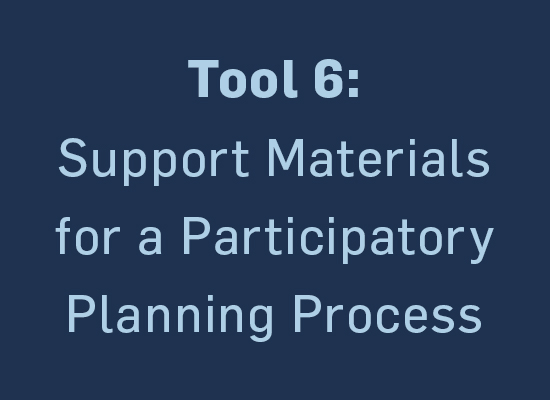| Tool | A broad overview of the importance of participatory planning processes to the integrity of WSIs, introduction to key principles and commonly used approaches, and useful reference material. |
| Related Key Activities | Define scope, objectives, and public interest benefits of the WSI. |
| Purpose | Build legitimacy and credibility, and avoid conflicts and capture through balanced stakeholder engagement:
|
| Possible Users | WSI facilitators, managers, and coordinators. |
| Level of Effort | Inherent to the facilitation and management of WSIs. |
| WSI Phase | Throughout the life cycle of the WSI. |
Effective stakeholder engagement is key to ensuring the needs, knowledge, perspectives, and interests of those impacted by the WSI are represented. Poor stakeholder engagement can negatively impact WSIs in several ways: among other things, it can lead to inappropriate or uninformed design, undermine durable outcomes, and contribute to stakeholder conflict. Further, where affected stakeholders are not involved adequately, WSIs cannot be assured to act in the public interest, and the lack of gatekeeping may increase capture risks.
Conversely, the active involvement of stakeholders provides important knowledge about the WSI context, which is required to mitigate integrity risks. Good participatory processes pass a sense of ownership to those involved (or affected), and thereby establish the credibility and legitimacy of the WSI and contribute to sustainability and transparency. In addition, proper stakeholder engagement ensures that affected stakeholders are adequately informed about the initiative, its progress, and possible obstacles, which constitutes the basis for accountability of WSIs.
Selected guidance documents to support stakeholder engagement processes:
The CEO Water Mandate’s Guide to Water-Related Collective Action (2013) targets private sector stakeholders with an interest in corporate water stewardship.
| ADVANTAGES | ADAPTATION |
|
|
The International Council on Mining & Metals has provided a practical guidance to identify stakeholders, clarify their concerns and aspirations, delineate engagement objectives, and initiate iterative consultation, as well as to communicate intentions, evaluate progress, and maintain engagement.
| ADVANTAGES | ADAPTATION NEEDS |
|
|
The AA1000 Stakeholder Engagement Standard (AccountAbility 2011)provides advice on: (1) how to establish the necessary commitment to stakeholder engagement, and how to ensure it is fully integrated in strategy and operations; (2) how to define the purpose, scope, and stakeholders of the engagement; and (3) what a quality stakeholder engagement process looks like.
| ADVANTAGES | ADAPTATION |
|
|
The National Forest Programme and the Food and Agricultural Organisation of the United Nations (O’Hara 2009) provide guidance on relevant tools and methodologies for stakeholder engagement processes, as well as a training manual on enhancing stakeholder participation.
| ADVANTAGES | ADAPTATION |
|
|






